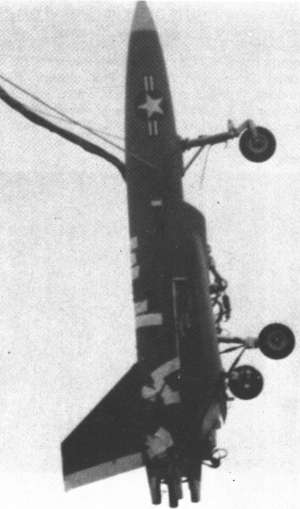| XBQM-108A | |
|---|---|
 | |
| General information | |
| Type | Unmanned aerial vehicle |
| National origin | United States |
| Manufacturer | Naval Weapons Center |
| Status | Canceled |
| Primary user | United States Navy |
| Number built | 1 |
| History | |
| First flight | 29 September 1976 |
| Developed from | BQM-74 Chukar |
The NSRDC XBQM-108A was an experimental VTOL unmanned aerial vehicle developed by the United States Navy during the 1970s. Although the XBQM-108A successfully conducted unmanned, tethered flight tests and the project was canceled before any free flights could be conducted.